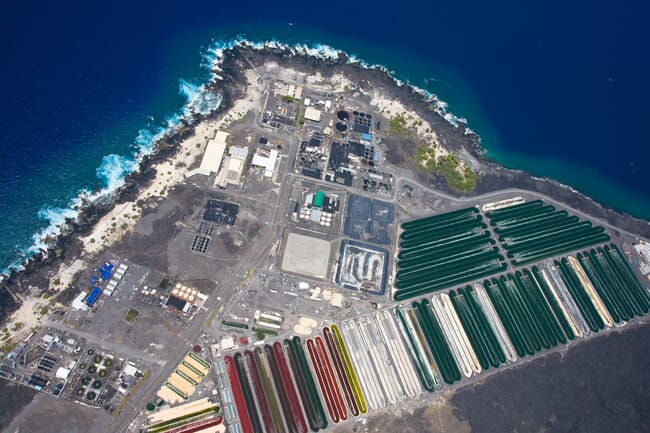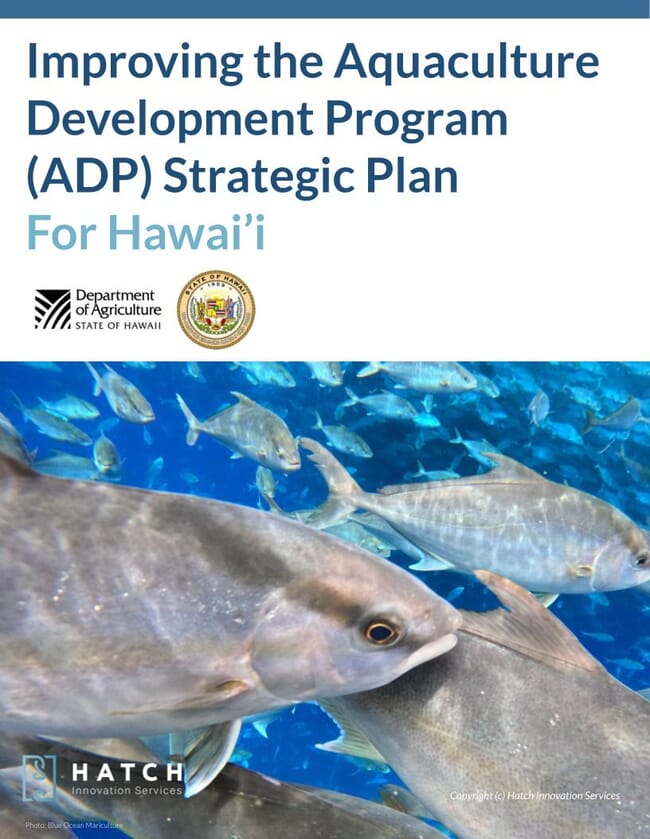
The park is a unique outdoor demonstration site for emerging aquaculture, renewable energy and other ocean-based sustainable technologies
The plan, which was drawn up by Hatch Innovation Services and commissioned by the Hawai’i Department of Agriculture (HDOA), aims to increase the state’s seafood production and tackle climate change through open ocean and restorative aquaculture practices.
The 49 existing producers in the archipelago’s aquaculture sector generated an impressive $78.5 million in sales in 2022. Of this figure, algae production accounted for over $45 million, up from $33 million in 2020. Meanwhile, revenues from finfish and shellfish are steady at around $40 million a year.
Looking ahead to 2030, the financial objectives for Hawai’i's aquaculture development includes expanding the value of established products like algae to $391 million and developing new segments such as value-added products to $33 million. The overarching target of the aquaculture industry is to reach a total of $599 million.
Reducing the seafood trade deficit
Hawai’i is well placed to help reduce the US seafood trade deficit, with the country importing seafood worth $30 billion in 2021. The state’s aquaculture sector includes established players such as Blue Ocean Mariculture and Cyanotech. Meanwhile startups like Symbrosia, KAS and Minnowtech demonstrate Hawai’i's potential for growth in production, innovation and supporting technologies.
The new plan provides a detailed roadmap for maintaining and expanding this lucrative sector and emphasises key areas for development. It includes recommendations for key improvement areas that local, state and federal agencies can focus on to sustainably grow seafood production in a way that benefits the economy, the community and the environment.

Key improvement areas
The report underscores four areas that are central to the growth of Hawai’i's aquaculture industry, with a focus on augmenting aquaculture production and enhancing restorative aquaculture initiatives.
Regulatory development and efficiency: Streamlining regulations and enhancing efficiency to facilitate the growth of aquaculture enterprises while ensuring environmental sustainability.
Applied research and entrepreneurship: Encouraging innovation through research and fostering entrepreneurship within the aquaculture sector.
Workforce development: Investing in workforce development programs to equip locals with the skills needed to excel in the aquaculture industry.
- Economic viability and growth: Promoting economic growth and viability within the aquaculture sector to make it a cornerstone of Hawaii's economy.
The case for an aquaculture innovation cluster
Hawai'i’s unique research and development centres, such as NELHA, have been instrumental in catalysing the growth of some of the most iconic and influential aquaculture companies in the world today.
Hatch Innovation Services believes there is scope to take this one step further to support the development of an aquaculture innovation cluster programme initiative in Hawaii to further foster collaboration and investment. As outlined in the report, such a cluster could help to facilitate collaborative projects across the private, academic, and public sectors. The plan outlines how this approach will attract increased funding and private sector investments, and drive advances in research, development and commercialisation of innovative aquaculture technologies.
As Tanja Hoel, managing director of Hatch Innovation Services, reflects: “What is unique about the innovation culture in Hawai’i is its strong commitment to ocean stewardship, deeply embedded in the local Hawaiian culture. Hawai’i also hosts some of the most impressive state-of-the-art infrastructure, making it a hotspot for technological development in warm water aquaculture.”
Todd Low, HDOA aquaculture manager, adds: “The Strategic Plan Improvement Report has exceeded our expectations to improve the existing aquaculture development plan. It provides a clear roadmap for initiatives that will position Hawai'i as a global aquaculture leader.”




